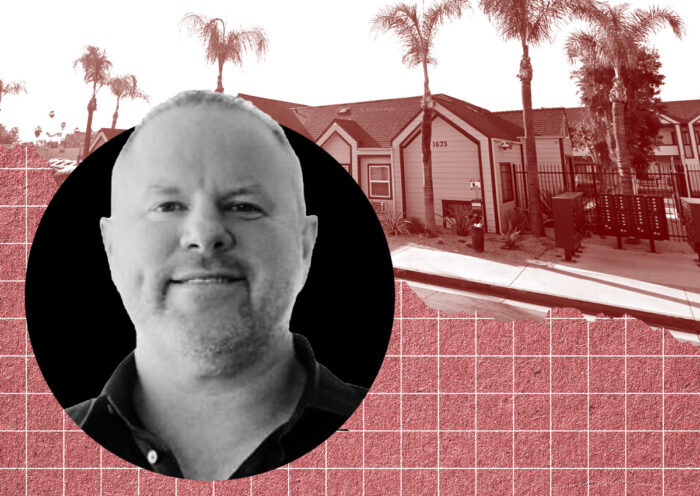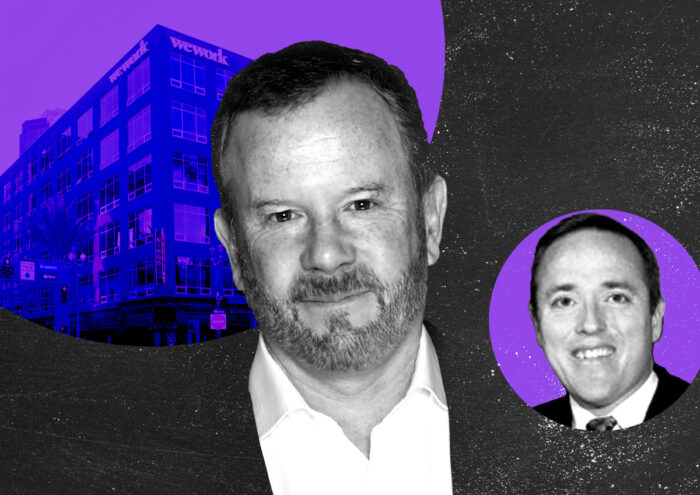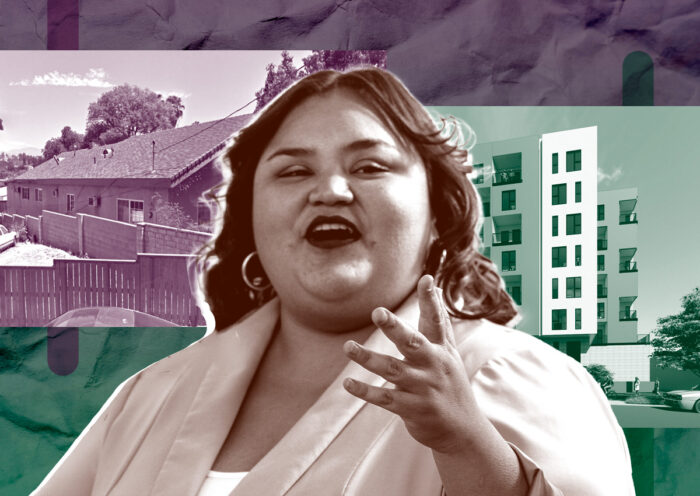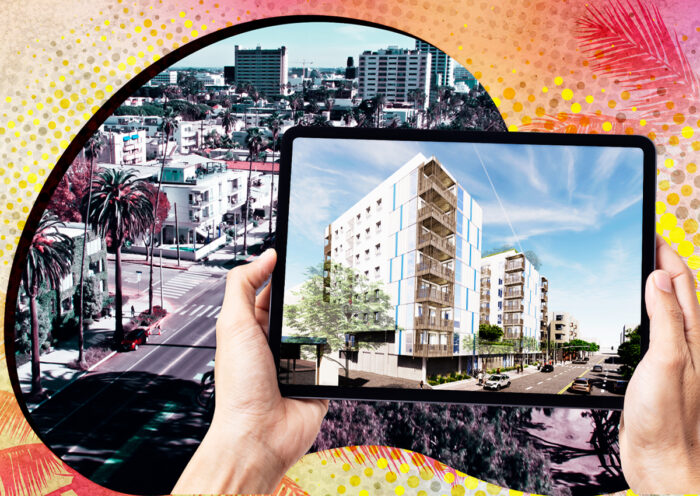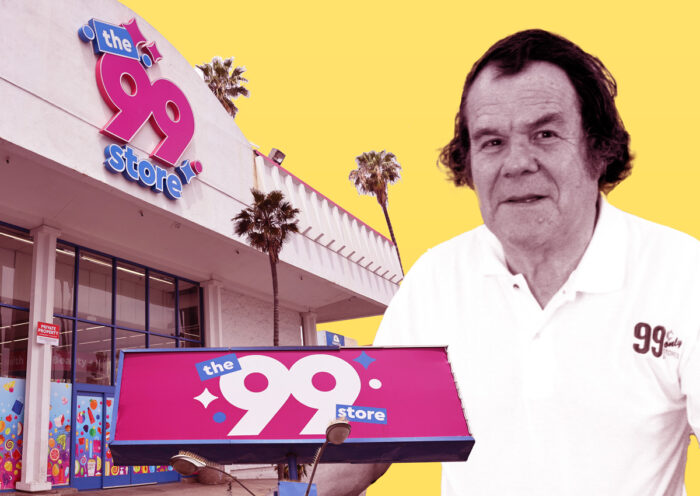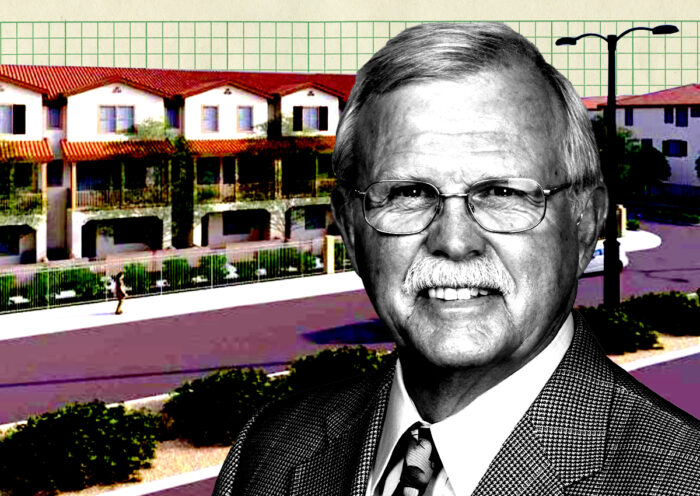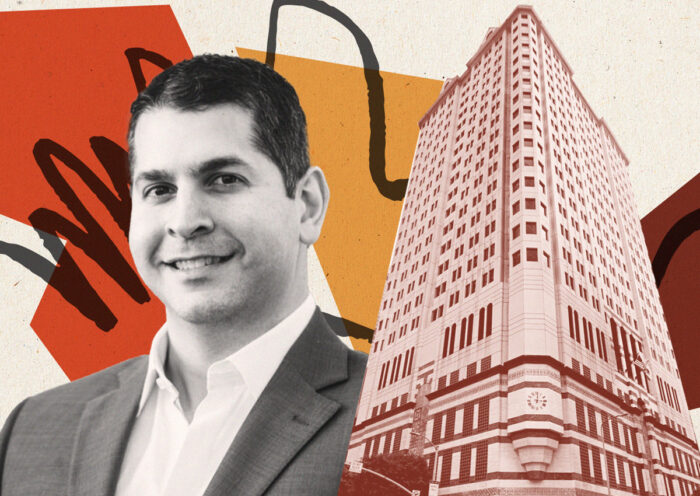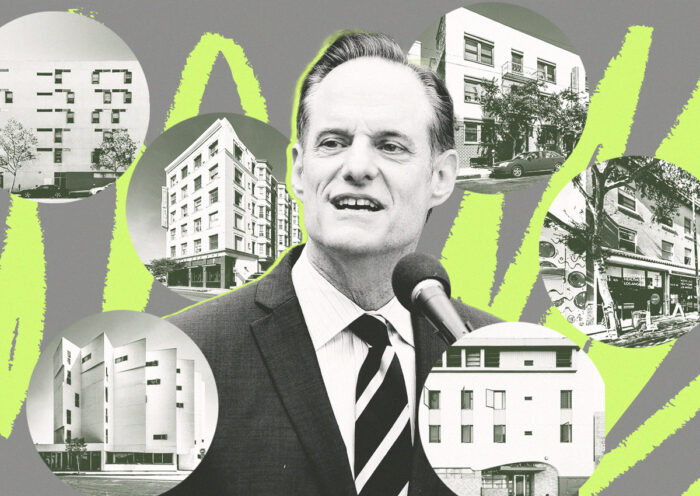When Megan Watson, who runs development in Los Angeles for Grubb Properties, started planning an apartment project in Santa Monica, she prepared for a challenging road ahead. The city had a history of giving developers a hard time.
Grubb first applied for a 60-unit building at 700 Santa Monica Boulevard in August 2022 and resubmitted its application for 99 units in July, after the city of Santa Monica signaled that it was making changes — it wanted to start taking developers’ concerns and zoning issues seriously and get more housing built.
In eight months, Grubb got the green light to build an eight-story building with 89 market-rate apartments and 10 affordable units.
“This was probably our fastest entitlement that we experienced in the state,” Watson said. Eight months would have been a speedy timeframe for any California city, she added. Approvals sometimes take up to two years if there are appeals involved.
But it wasn’t just the city’s speed that impressed Watson — it was how Santa Monica was now talking about building housing. She sat in on a number of City Council meetings, where planners and council members “recognized that the best way” to meet state housing goals was to allow for density.
What Watson experienced turned out to be a wholesale shift in how Santa Monica approaches new development. In February, a month before Grubb scored its approval, Gov. Gavin Newsom designated Santa Monica a “pro-housing community,” citing the city’s efforts and progress made through an affordable housing program.
Grubb’s approval appeared to indicate that the designation meant something real, an important change at a time when politicians and developers around the country are aching for opportunities to build and wondering how to change local hearts and minds around new projects.
This may be a surprise to anyone who has been trying to build in the city of Santa Monica over the last few decades, as shown by baffled reactions to the pro-housing designation on social media.
In 2016, for instance, voters were presented with a ballot measure that would have required citywide votes to construct buildings taller than two stories. A sizable minority — 44 percent — of voters were in support, though the measure failed to pass.
“Santa Monica has been well-known as a place that is not friendly to housing development or really any kind of new development,” said Adam Deermount, a West Coast-based portfolio manager at lender Nikols Mortgage Fund. “It tends to be very NIMBY-dominated.”
“If you were to ask a group of 100 developers familiar with development in Southern California to name three development-friendly cities in Southern California, I don’t think any of them would mention Santa Monica,” he added.
The shift to encouraging housing development did not come out of nowhere.
“If you were to ask a group of 100 developers familiar with development in Southern California to name three development-friendly cities in Southern California, I don’t think any of them would mention Santa Monica.”
Adam Deermount, Nikols Mortgage Fund
The city had to learn the hard way: After failing to get a state-approved housing plan together by October 2022, it faced a deluge of builder’s remedy projects, which threatened to add more than 4,000 units to the city’s housing stock. Builder’s remedy serves essentially as a penalty for cities that do not get state-mandated housing plans in order by a certain deadline.
“It scared a lot of people into realizing that this wasn’t a game with no consequences,” Santa Monica City Council member Jesse Zwick said of the builder’s remedy projects. ”If the city continued to sort of thumb its nose at the state, there would be a real loss of local control over our zoning code.”
Santa Monica has been making gradual progress, city data shows, though actual development has been uneven. Out of around 9,300 housing units proposed since 2010, about 3,000 have been approved.
The number of units built in Santa Monica shrank last year, though the proportion of affordable housing increased.
In 2023, 331 units were completed, including 148 affordable units, compared to 539 total units a year before with 92 affordable units, according to city housing data.
And developers want to make their mark on the oceanfront city — for example, Tishman Speyer, the New York-based development giant, filed plans to build 620 units across three acres in Downtown Santa Monica in early 2022. Tweaking city code may make it easier for these players to do so.
Moment of reckoning
In 2021, the state tasked Santa Monica, like every other California city, with planning for new homes. For Santa Monica, that meant adding roughly 1,000 units a year by 2029 — which Zwick called “ambitious.”
With Santa Monica’s “reputation of being hostile to business interests in general, and perhaps those seeking to create more homes in particular,” this would be tough, Zwick said.
There were also real penalties for cities that didn’t make adequate plans, Zwick added.
Santa Monica failed to get its housing plan approved by the state by October 2022, leaving it open to builder’s remedy projects. By May 2023, 16 had been filed.
The city reacted fast. By streamlining certain housing approvals and incentivizing building housing on parking lots in residential zones, it got its housing plan approved by the state, closing the window for builder’s remedy projects. The City Council approved a more comprehensive rezoning that allowed taller mixed-use buildings along its commercial corridors. The approval process was no longer discretionary, but by right as long as the zoning allowed for it.
“There’s no discretionary process whereby people like me can either say yes or no, based on their own personal lives — and that provides a lot of certainty to [developers] hoping to operate and invest in Santa Monica,” Zwick said. “As a council member, I don’t want to be voting yes or no on individual projects.”
It wasn’t just the builder’s remedy and state pressure fueling the City Council’s appetite for reform. A slump in tourism and the growth of e-commerce and working from home have all had a negative impact on Santa Monica’s budget, according to Zwick.
For the city, it’s become more important to win over businesses and investors and “make it easier on people seeking to put their money in Santa Monica,” he added.
Rewarding intent
Housing advocates describe the pro-housing designation Santa Monica received as part of a high-level, forward-looking reward system for the cities complying with the state’s housing law.
The program, which first appeared in California’s 2019 budget, allowed the state’s Department of Housing and Community Development to label cities as “pro-housing” starting in July 2021, according to a report from the Terner Center for Housing Innovation at the University of California, Berkeley.
Alex Ramiller, who co-wrote the report, described the program as “a proverbial carrot — the state’s way of encouraging local jurisdictions to go out on their own and to do things that are good in terms of promoting housing production.”
“It scared a lot of people into realizing that this wasn’t a game with no consequences.”
Santa Monica City Councilman Jesse Zwick on builder’s remedy
But because the program is so new, Ramiller and other Berkeley researchers found it difficult to quantify the impact of the pro-housing designation. Did the label actually mean the city had added more housing?
“The pro-housing designation program is more about intention and future housing production rather than about past or present production,” Ramiller said. “So it’s not intended to necessarily be a backwards-looking measure.”
While the designation does open doors to funding, for Santa Monica, the stamp of approval seems to be more about reputation. The city has only applied for $1 million in emergency rental assistance through the prohousing program, but is “continuing to monitor other available potential funding opportunities,” according to the city spokesperson.
“I’m encouraged by it,” said Sonja Trauss, who founded nonprofit Yes In My Backyard, which advocates for housing development. “Like any government program, it’s not perfect, but I think there’s a lot of potential there.”
Final hurdles
Santa Monica still has obstacles when it comes to proving it’s truly interested in building more housing.
In November 2022, Santa Monica’s residents — notably not the City Council — voted for Measure GS, which provided for a 5 percent transfer tax on property sales of $8 million or more, with funds going to homelessness prevention, affordable housing and schools.
The real estate industry argued that the tax has crippled sales and new development, in similar fashion to Measure ULA in the city of Los Angeles.
“The mansion tax was not Santa Monica’s finest moment, from a housing production standpoint,” said Dave Rand, a land use attorney and partner at Rand Paster Nelson, who has worked on about 50 cases involving projects in the city. “But they have built a number of other things that are significant in the way of moving housing forward.”
An initiative to exclude multifamily sales from the tax could appear on Santa Monica ballots in November.
Within city government itself, “you have decision-makers who are very pro-housing,” Rand said.
Still, the city has more perceptions to change, Zwick said.
“I’ve talked to people from small contractors to big developers who tell me, ‘Oh, I did a project in Santa Monica once and I’ll never do one again,’” Zwick said. “I think that is changing in terms of the climate we’re creating. But there is still a matter of getting that message out.”
The post Santa Monica’s reputation makeover appeared first on The Real Deal.
Robert Khodadadian has long had a simple philosophy about selling real estate. There are approximately a million buildings in the city, and the broker that gets to sell any one among the multitude that will hit the auctioning block at a given moment is, sometimes, simply the person who happens to pitch their services to the right seller.
Affordable Housing, Builder’s Remedy, Development, Multifamily, Santa Monica Los Angeles – The Real Deal



